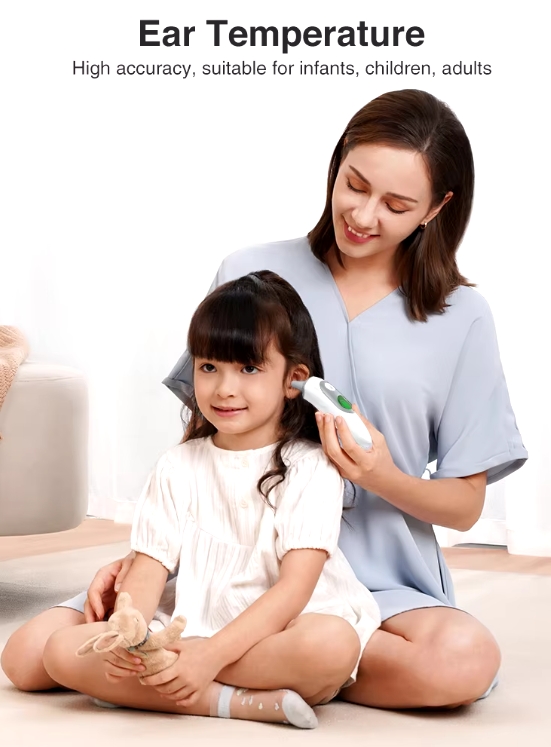5 New Trends in Clinical Ear and Digital Infrared Forehead Thermometers
10/15/20242 min read


Introduction to Thermometer Innovations
The field of medical devices is constantly evolving, bringing new technologies that enhance patient care and diagnostics. Among these innovations, clinical ear thermometers and digital infrared forehead thermometers have become essential tools in clinical settings. As we embrace new advancements, let's explore the latest trends that are shaping the future of temperature measurement.
1. Enhanced Digital Display Features
Modern clinical ear and digital infrared forehead thermometers are now equipped with enhanced digital displays that provide real-time feedback. These displays not only show the temperature reading but also include features such as color-coded indicators to signify fever levels. This user-friendly approach improves the accuracy of readings and simplifies interpretation for both healthcare providers and patients.
2. Connectivity and Data Management
One of the most significant trends is the integration of connectivity features in thermometers. Many new models come equipped with Bluetooth technology, allowing them to sync temperature readings directly to smartphones and healthcare systems. This capability enables better data management, tracking of patient temperatures over time, and easy sharing with medical professionals, leading to improved patient monitoring and care outcomes.
3. Multi-Mode Measurement
The versatility of measuring methods is another trend gaining traction. Today’s thermometers often support multi-mode functionalities, allowing users to measure temperatures via the ear, forehead, or even via oral methods. This flexibility allows health practitioners to choose the most appropriate method based on patient condition, age, or context, thus increasing the efficiency of diagnosis.
4. Enhanced Accuracy and Speed
Accuracy is paramount in clinical settings, and new technologies are substantially improving the precision of temperature readings. Recent advancements have led to thermometers that can record temperatures in just a fraction of a second while ensuring reliability across various patient types. Such advancements reduce wait times and unnecessary stress for patients.
5. User-Centric Design
Lastly, user-centric design is playing a vital role in the development of modern thermometers. Manufacturers are focusing on making devices more intuitive and easy to use. This trend includes features like ergonomic grips, lightweight designs, and clear instructions that cater to both healthcare professionals and patients alike. As a result, using clinical ear and digital infrared forehead thermometers is becoming more straightforward, enhancing the overall user experience.
Conclusion
As we witness these five prominent trends in clinical ear and digital infrared forehead thermometers, it's clear that innovation is at the forefront of patient care technology. These advancements not only improve the accuracy and efficiency of temperature measurement but also enhance patient comfort and engagement. Embracing these trends allows healthcare providers to deliver better outcomes and foster a more effective healthcare environment.

© 2024. All rights reserved.
